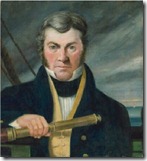It doesn’t matter how many time you see a whale, it will always be an amazing experience and will be relived in your conversations over and over.
Between the months of May and July whales can be seen passing Jervis Bay during their annual migration north to their breeding grounds in the warmer waters of northeastern Australia.
There are many places to observe this annual migration and one of the local favourites is the lookout atop the cliffs near the old ruined lighthouse in Broderie National Park.
During September and November the whales will be seen heading south on their return journey, many with calves. During their return many call into the bay, sometimes they can be seen a short distance off the beaches. In 2012 a southern right whale confounded the experts and attracted large crowds of onlookers by staying just outside the entrance to Currambene Creek, the experts had all sorts of theories, it was resting, it was sick, it might have been attacked by sharks or hit by a boat, we heard it all, but the whale surprised everyone because a few days later it gave birth to a beautiful calf before moving off with its new baby to finish their migration south.
Jervis Bay has a number of tour operators more than willing to give you a close encounter with these magnificent marine mammals. Detail of these can be found at the visitor's centre inside the museum.
Types of Whales Hunted. There were two main types of whales pursued in our waters, the Humpback (Megaptera novaeangliae) and the Southern Right Whale. (Eubalaena australis)
Other whales were also caught along our coast, the much rarer giant of the sea the Blue Whale was also caught and processed inside Jervis Bay.
Haunting whale sounds here.
In the past this annual migration was exploited by whale hunting companies. Whale oil and other parts of the whale were a valuable resourse. All of which can be replaced with synthetic equivalents now.
I didn’t know they hunted whales from Jervis Bay?
Whalers visited the bay hunting whales as early as the 1790’s right up until 1913.
Large whaling ships called into the bays sheltered waters during whale operations along the southern coast and reprovisioned their ships at Bristol Point.
1790’s
Whaling was a messy, smelly and dangerous low paid job and when gold was discovered in the hills behind Jervis bay many of the ship crews would desert the ship hoping to strike it rich in the gold fields around Nerriga and Yalwal. Calling into the bay became less desirable for ship owners and eventually stopped.

1840
Captain William Kinghorn set up a land-based operation on the northern side of the bay near Montague Point on the Mount Jervis property belonging to his father Alexander Kinghorn. There is an area of land between Culburra and Currarong named after the family, Kinghorn Point, and can be accessed from the road out to Currarong. There are two streets named after the family as well, Kinghorn Street in Nowra and Goulburn. Captain Kinghorn in his 80's died in his home at Goulburn in 1878.
1859
It is unknown how long his whaling operation existed in the bay, but the Caroline was wrecked at Point Perpendicular and the crew made their way through the bush and came upon the station of James Kinghorn, Esq., “who’s superintendent rendered them every assistance”. so it appears that the whaling station was possibly still operating in 1859.
Read more - Captain William Kinghorn
1912
The Norwegian factory ship the Loch Tay, plus three chasers the Sorrell, Campbell and Lionel arrived in the Bay to hunt whales with the full support of the NSW government. During the opening season they harpooned 158 whales.
Their eventual take totalled 537 whales in two seasons, but they were forced to close because of the strong odour which drifted across the bay during the summer northeasters, reaching the Royal Australian Naval College (HMAS Creswell) and Huskisson. There were also complaints about the putrid offal floating in the bay which attracted large sharks and made the navy’s training operations dangerous.
One of the beautiful paintings by Ian Hansen on display in the museum, depicting whale operations near Bristol Point.
1917
Records show there was also a small whale hunting operation running on the southern side of the bay, near Bristol Point and Greenpatch, this operation may have been used to supplement the fishing families income.
1919
An investor Mr Moore, was willing to spend large sums of money to set up another large land-based operation in the bay. With the experience of the previous operation and after correspondence between the NSW Premier and the serving Prime Minister William Watt, the Prime Minister stated!
“it would be unwise to permit the establishment of a whaling station which is in close proximity to the Naval College HMAS Creswell" and with that, all whaling from Jervis Bay ceased.
Today: Fortunately for us all, most countries have ceased whaling operations. In the oceans close to Australia the Japanese are still conducting operations under the ridiculous facade of research.
Despite this the whale population around the world is slowly recovering, but sits on a knife edge, with more pressure being applied to the few remaining whale hunting countries to stop operations. Hopefully we will see some common sense and a return of large numbers of these amazingly beautiful creatures to our oceans.
The museum has a fine collection of equipment and information on display from the whaling industry, some can be seen on this page, pay us a visit and take a walk back into an era long since past!
One of the museums finely detailed model of a ship made from whale bone.
Continue reading about whaling in and around Jervis Bay.
REF: Read more:


Interesting history. I wonder what they did with all the skeletons?
ReplyDelete